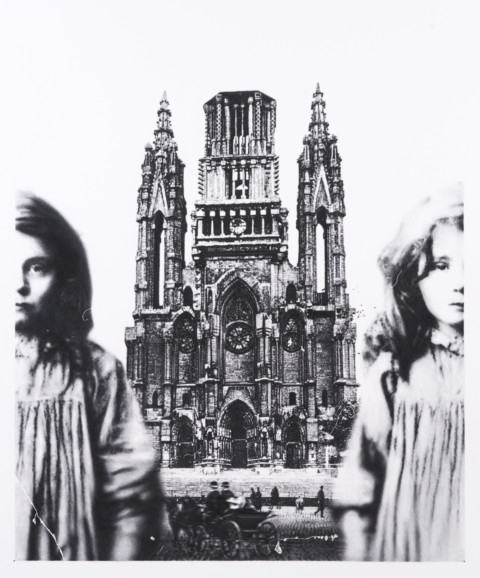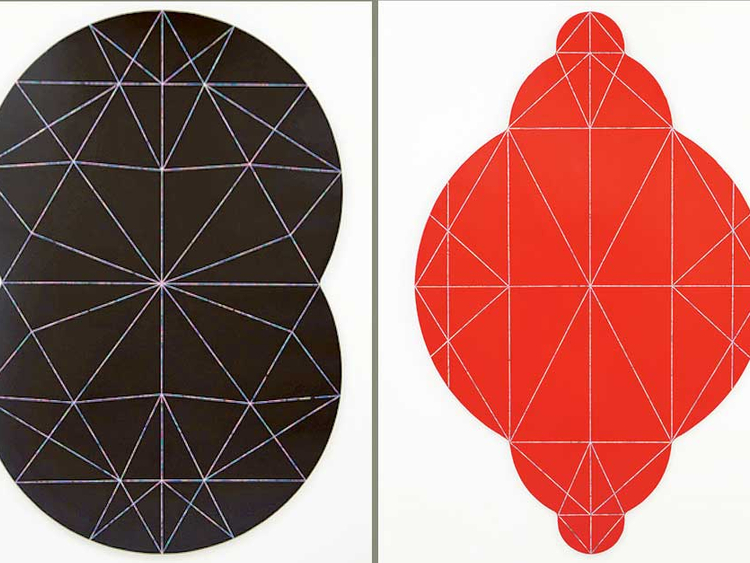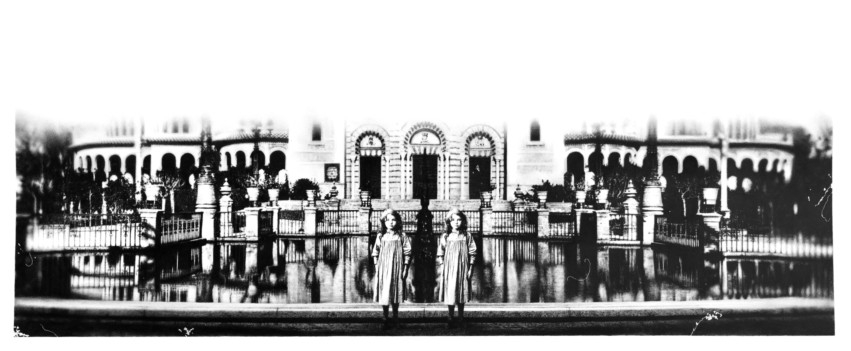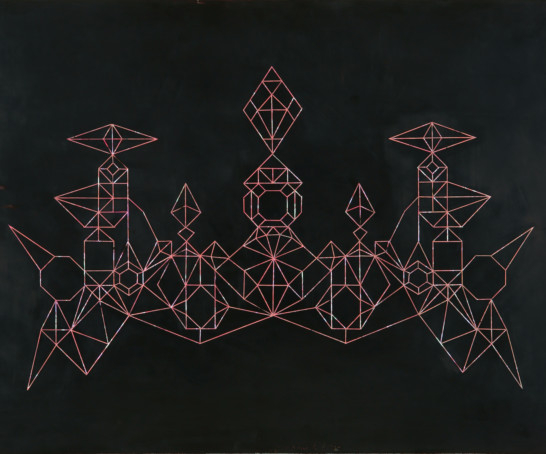
Japanese artist Shinji Ogawa and Korean artist UnKyung Hur’s art practice is quite different. But both artists use traditional techniques that require tremendous skill and patience, and play with symmetry in their work to explore the idea of creation, time, space and human existence.
The two artists are exhibiting their work in Dubai for the first time in a joint show titled “In the Water”.
At first glance Ogawa’s artworks from his “Perfect World” series look like photographs of well-known places. But a closer look reveals that the exquisitely detailed pieces are actually pencil drawings. The artist has a huge collection of old picture postcards from around the world; and the landscapes in his drawings are inspired by the photographs on the postcards.
Although he carefully copies every detail of the landscapes, including the scratches and folds on the postcards, some of which are a hundred years old, Ogawa also alters the scenes by duplicating some element of the buildings. The result is either the creation or disruption of symmetry in the original image.
In some drawings, where the buildings remain unaltered, there is a duplicated image of a little girl, which he also found on a postcard, placed in the foreground.
Since the places and people in his drawings are taken from very old images, the artworks have a sense of nostalgia and the feeling that time has stood still. Through the quirky imperfections in his reproductions of pictures that were designed to present a beautiful, enticing, perfect tourist destination, the artist ironically reminds viewers that there is no such thing as a perfect world. Ogawa has experimented with various configurations and arrangements in his mystical landscapes. In a drawing of the beautiful cathedral in Pisa, he has simply duplicated the famous leaning bell-tower of the cathedral, emphasising the beauty of its imperfection. His two drawings of Venice depict two different buildings located on opposite banks from the viewpoint of the people riding in the gondolas in the water in between.
The duplicated towers in each structure create a strangely appealing asymmetrical symmetry. In another drawing the artist has juxtaposed the symmetrical Gothic cathedral in Antwerp with the asymmetry of the landscape of Geneva in the background. Whereas, in “Circle and Reflection in the Water”, the cloned image of the girl in the foreground enhances the symmetry of the circular building behind and its reflection in the water.
In a set of drawings titled “Laeken” from his “Behind You” series, the artist creates the effect of mirroring, by imagining the world and time as a cylinder that has been cut at different points, resulting in different configurations of the same image of a girl standing in front of a building.
“I am interested in exploring how time and space are constructed by our consciousness. When I did these drawings, I was thinking about life as something that flows along the current of time and wondering if I could depict something impossible such as loops in the current that make time freeze and stand still, allowing the past and present to coexist. I subconsciously visualised these concepts in my dreams, and transcribed my dreams into sketches, illustrating the ideas with suitable images from my postcard collection. The dated images of places and people in my contemporary drawings suggest a coexistence of the past and present. Through these different configurations, I want to say that there are so many different ways of looking at the world; and just as we cannot see what is behind us, there are many realities that we cannot see. My drawings depict familiar landscapes, but when viewers take a closer look, they will find that there is something different about them. My aim is to make viewers look closely at the world around them and to feel the mystery of the universe that exists in ordinary life,” Ogawa says.
Unlike Ogawa’s black and white drawings, UnKyung Hur’s artworks are colourful. The artist from Seoul uses traditional Korean lacquer inlaid with mother of pearl to explore the relationship between vitality and energy. There is a scientific element in Hur’s spiritual exploration of human existence. In “Base Station”, the artist takes inspiration from space travel to create geometrical shapes with delicate lines of inlaid mother of pearl. Through these mystical space stations she contemplates the place of human beings in the universe.
From this macroscopic perspective, Hur moves to the microscopic viewpoint in her “Cell” series. The shapes in this series resemble the tiny cells in the human body with the fine inlaid lines representing the biochemical processes that generate life and energy. Her meditative, intricate artworks invite viewers to contemplate the idea of creation and extinction, time and space, life and death.
“In the Water” will run at XVA Gallery, in the Al Fahidi Historical Neighbourhood until Januray 31.















